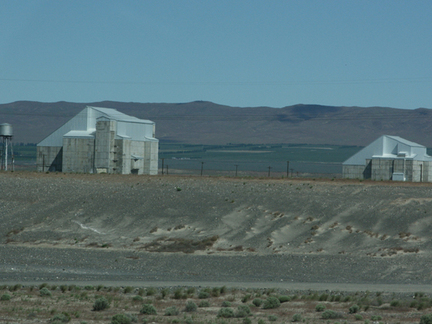forum
library
tutorial
contact

Nuclear Power Should not be Blindly
Dismissed as Part of Total Energy Solution
by Sid MorrisonThe Seattle Times, June 30, 2009
|
the film forum library tutorial contact |

|
Nuclear Power Should not be Blindly
by Sid Morrison |
According to the BPA,the present average regional power load is about 26,000 megawatts.
We can expect regional demand to grow by 2,000 to 3,000 megawatts over the next four to five years.
 PASSION for an ideal, like totally clean energy, can be powerful and contagious, blindingly so.
PASSION for an ideal, like totally clean energy, can be powerful and contagious, blindingly so.
Such passion has convinced some people we can meet all our future electric-energy needs in the Northwest with nothing more than conservation and renewable energy sources. That utopian dream ignores the necessity for baseload or full-time power sources, including carbon-free nuclear power, to back up intermittent power sources like wind and solar power.
Conservation and renewable-energy sources are an essential and responsible part of the answer to our future energy needs; they just aren't the whole solution.
While conservation is undeniably the cleanest, fastest, cheapest and best way to offset new power demand, the law of diminishing returns clearly applies. We simply can't conserve our way out of the need for more power to meet future needs.
In the Northwest, renewable energy really means wind power, and to a lesser degree solar and biomass -- at least until major improvements in wave, tidal, geothermal and other technologies are achieved. The intermittent nature of wind and solar power is a real problem. On-again/off-again power destabilizes the regional transmission grid through dramatic power swings created by changing weather conditions.
The challenge of meeting all our power needs with conservation and renewables becomes greater if we commit to electrifying any meaningful portion of our transportation system -- an initiative we may have to pursue to meet our state's carbon-emissions targets.
Fortunately, organizations like Energy Northwest, successfully operating the state's one nuclear reactor, are working diligently to provide a mix of carbon-free electric-power options to avoid needlessly limiting our options and gambling our economic future in the process.
According to the Bonneville Power Administration, the present average regional power load is about 26,000 megawatts. We can expect regional demand to grow by 2,000 to 3,000 megawatts over the next four to five years. Demand can easily rise 10 to 15 percent over the several years it takes to permit and build a substantial power-generation facility.
So, by all means continue to implement conservation and support all the wind, biomass, solar, geothermal, wave and tidal power that can be brought online.
But realize we can't stop there. We must also have full-time baseload power generation to back up intermittent renewable-power sources to ensure we have power when the wind is not blowing and the sun is not shining.
In Washington, the two realistic options available today for full-time baseload power are natural gas and nuclear power.
Tired attempts to link commercial nuclear power to vastly overblown cost and risk factors and defense wastes are irresponsible. Used commercial nuclear fuel is a valuable commodity that can be recycled, as is the routine in many of the world's nuclear-energy countries. Approximately 95 percent of the used fuel in every commercial reactor can be recycled safely, thereby reducing dependence on foreign energy sources and minimizing the need for new uranium mines.
Washington's economy eventually will return to full force and continue to strengthen. It will take multiple sources of power, perhaps all the options available to ensure reliable, affordable, environmentally responsible power is available to grow a vibrant regional economy.
Our state needs informed citizens working with legislators and industry to meet our future power demands and carbon-emission goals. It is imperative we all set aside our individual passions and biases long enough to objectively assess our options. Become your own best source of factual information on energy issues. Challenge assertions and fear mongering by doing your own research. Question your own paradigms about energy policy and the various technologies.
Failing to seriously consider the safe, carbon-free commercial nuclear-power option could be the first sign of a well-intended passion blinding your objectivity.
Related Pages:
Efficiency, Renewables Better than Gambling Anew on Nuclear by Sara Patton, The Seattle Times, 6/19/9
learn more on topics covered in the film
see the video
read the script
learn the songs
discussion forum
